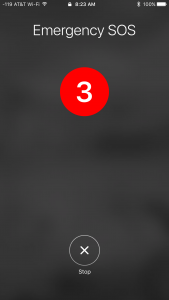Jeff Benjamin, writing for 9to5mac, goes into a fair amount of detail on the new iPhone 7 home button. If you’ve not yet had the chance to play with one, this post will answer a lot of questions.
The Home button on the iPhone 7 feels more responsive than the old mechanical Home button, as long as you ensure that you make skin contact with it.
To me, the home button feels different, even odd, because the underlying mechanism is completely different. Rather than a directly coupled microswitch which clicked as you pressed it, the new mechanism relies on a circuit to activate a taptic engine lying underneath the home button.
I get the slightest feeling of delay from the moment I apply pressure to the home button to the moment when I actually feel the vibration from the taptic engine. This could be my imagination, the way my brain translates that different feel, but it certainly will take some getting used to.
Because the new solid state Home button requires skin contact to register presses, this makes interacting with the Home button through non-capacitive gloves or other barriers a non-starter. It also means that you can no longer click the Home button with your fingernail, a practice that many of us with soiled hands have relied on in the past.
I’ve also used my fingernail to press the button without unlocking the phone, just to see the lock screen. Again, just something to get used to.
Yes, the Home button has changed and the change may feel odd at first, but after you get used to it, it’s much better. Going back to the mechanical Home button on my iPhone 6s now feels weird. I’ve simply come to the realization that the new Home button isn’t bad at all, it’s just the way that a Home button on an iPhone 7 is supposed to feel.
The big win here is waterproofing resistance, something the old design would not have supported. So get used to it we will.

